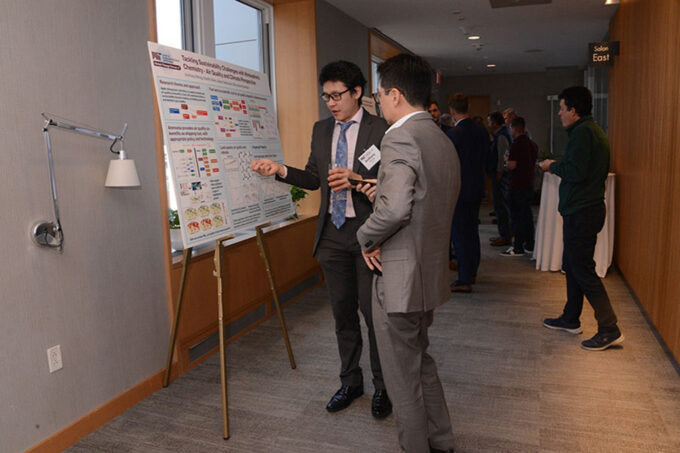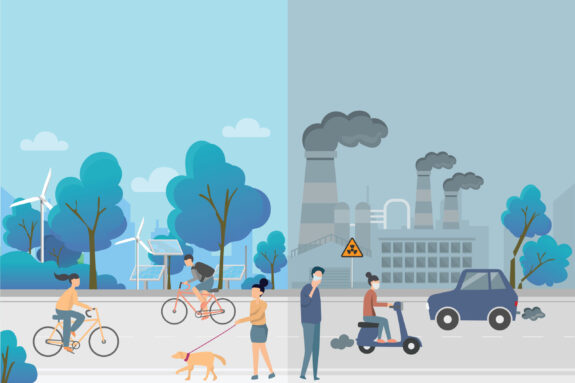3Q’s: Investigating environmental impacts of alternative fuel usage

MIT CS3 Postdoctoral Associate Anthony Wong is evaluating the environmental impacts of potential increasing alternative fuel usage and using machine learning to facilitate climate air quality co-benefit research. Photo credit: Dimonika Bray
MIT Center for Sustainability Science and Strategy (CS3) Postdoctoral Associate Anthony Wong is interested in investigating how the terrestrial biosphere, nitrogen cycle, energy system and climate interact with air quality, and by extension their implications for public policy and resource management. At MIT, he is evaluating the environmental impacts of increased alternative fuel usage and using machine learning to facilitate climate air quality co-benefit research. Wong earned a PhD in Earth and Environment from Boston University, where he studied ozone deposition and how land-system changes can affect air quality. He also holds a BSc in Physics from Chinese University of Hong Kong, where he was a research assistant working on atmosphere-biosphere interactions.
Q: How did you become interested in air quality in the low-carbon transition?
A: When I was a kid, we would go to the library, and I would naturally want to look at science books while most other kids were looking at comics. I always knew I wanted to be a scientist, but what type of scientist? In college I studied physics and then had an internship at Caltech looking at how fast the atmospheric concentration of CO₂ was growing over Los Angeles. I thought this was impactful and way easier than theoretical physics. Then I did two years of air quality and biosphere research in Hong Kong and continued that work at Boston University. Basic study of the atmosphere/biosphere is a beautiful science because there are so many moving parts—you have to learn chemistry, physics and biology, but I wanted to do something that’s more actionable. That’s where my postdoc at MIT CS3 comes in.
Q: Can you highlight your recent and ongoing work in this area?
A: My research addresses the climate, air-quality and human health impacts of burning different types of low- or zero-carbon fuels, including ammonia, hydrogen and biofuel. For example, we found that using ammonia as a high-energy-density, low-volume, low-cost shipping fuel could lead to significantly lower greenhouse gas emissions than those produced by diesel fuel but would vastly increase PM2.5 [fine particulate matter] air pollution and premature deaths. That air-quality “penalty” could be avoided through enforcement of stringent policies that require cleaner engine technology to control unburnt ammonia emissions resulting from incomplete combustion.
We are also integrating air quality into energy-system science by creating an air-quality emulator that could allow policymakers and other decision-makers to calculate the impacts of global energy-system changes on PM2.5 air quality. Existing tools are complex, time-consuming and expensive, but machine learning could result in an emulator that’s more accessible. By inputting changes in energy mix or demand in the emulator, the user can change the amount of fuel burned and assess the associated changes in air pollutant emissions and air quality.
Q: How do you hope your research will contribute to human well-being?
A: If the technology improvements and policy measures are in place to avoid negative air quality impacts from using ammonia as an alternative shipping fuel, that will accelerate maritime decarbonization and air quality improvements. As for the air quality emulator, many climate policies ask us to sacrifice what we have now for a long-term benefit. But this narrative hugely ignores that climate policies can bring immediate benefits (e.g., reduced ambient pollution and childhood asthma by eliminating a coal-fired power plant) through improving air quality and public health. The emulator could provide a quantitative estimate of how a climate policy would improve public health, so people can understand the true benefit of a greener future not just in terms of avoiding a disaster 30 years later but in delivering an immediate public health benefit.


